All about pottery

Clay is one of those materials that humanity has been using since time immemorial. It was and is often used to make dishes from it. But behind the seeming simplicity of clay containers, there are many interesting and important things.

A bit of history
The very emergence of ceramics is extremely interesting. Pottery production began several thousand years ago. Pottery was one of the main activities in any ancient civilization. Later, more advanced materials appeared (porcelain and earthenware), but each of them has its own drawbacks. The profession of a potter was respected, however, the requirements for people employed in it were very strict.
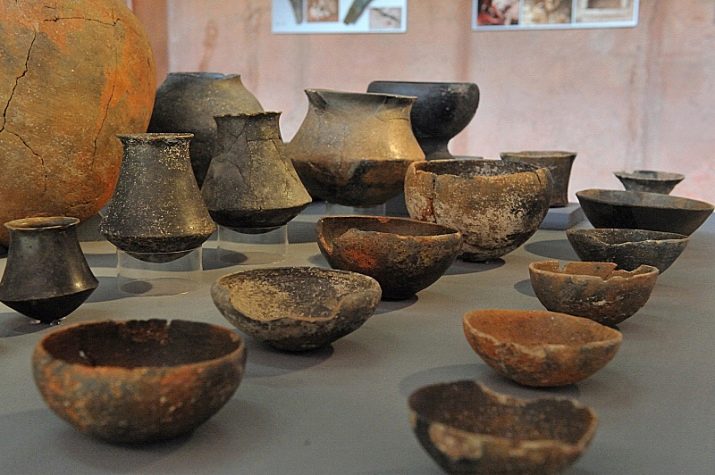
It is believed that the earliest was such a variety of dishes as a pot. The easiest way to get it is on a hand-held potter's wheel. For centuries, this type of tableware has dominated in various parts of the world.
Antique pottery, and pots in particular, are in great demand among collectors.
The emergence of large-scale industrial production of ceramics in the 19th century expanded its range and made it possible to make clay products almost unlimitedly.
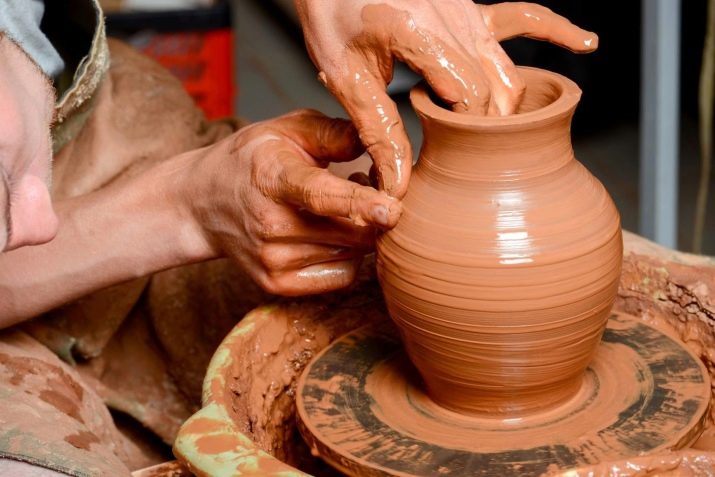
But the merit of the ancient masters remains invaluable in its value. It is believed that pottery began at the turn of the Middle and New Stone Ages. In our country, already in the early Middle Ages, hundreds and thousands of people were engaged in pottery. At that time, mostly oval pots and cauldrons came out of the workshops. Their shape was not accidental - the dishes were made so that they fit into a Russian oven.

The shapes and sizes could vary greatly.Each master had his own production secrets and carefully kept them secret. Earthenware kitchen pots were very expensive due to their handicraft and were therefore treated with respect. Such dishes were endowed with a variety of cultural meanings.
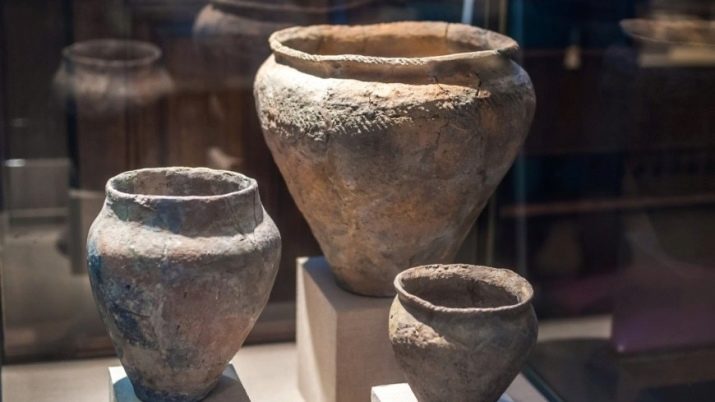
Even now, when large batches of kitchen utensils are made in factories without problems, quite a few people make them in home workshops.
As in the old days, experienced ceramists extract raw materials for production on their own and themselves bring them to the required conditions. You can make something good from both red and white clay only if it:
- oily;
- does not contain foreign inclusions and small stones;
- stored at a strictly defined humidity.

White clay is used most often. In its natural form, it is painted in a grayish tone. When such raw material is fired, it becomes ivory. Red clay contains iron oxide and gets its characteristic color after firing. It is easy to sculpt such a breed, it is not prone to crumbling.


Raw porcelain clay has a gray color, and whitens when fired. The hardest variety is initially black or dark brown. When burnt, it is painted in ivory. Potters also distinguish clay by its melting point. Both in large-scale and in handicraft production, they try to cover finished products with glaze or enamel, other compounds that help to achieve the necessary properties.

There are also utensils without impurities: they are usually made of terracotta (red clay) or black ceramics.
Terracotta pots are perfect for oven baking.
Thick walls warm up slowly, and this property was appreciated already in ancient times. Cookware made of smoked ceramics was and is being made for baking various dishes.

Over the long history of pottery, many types of pottery have been created. But all of it is created using approximately the same technology (with rare exceptions). The clay must be moistened, because it is impossible to compress it properly when dry. Then they knead it and turn it into bundles. This method of obtaining blanks is more practical than using whole pieces. Further, as in ancient times, any workpieces are dried and fired.

Advantages and disadvantages
Already in ancient times it became clear that earthenware is very suitable for kitchen purposes. Fired clay, of course, is natural, there are no foreign substances in its composition that can cause harm. Clay containers, if they are made soundly, evoke emotional inspiration and delight the eye. This is true even for the “simplest” cups and pots; original products look even more pleasant.

Ordinary clay-based ceramics have a number of valuable properties that porcelain and earthenware dishes do not have.
It is noted that it can independently maintain the optimum temperature and humidity.
If you pour compote into a clay jug, and then put it on a sun-drenched windowsill, the drink will remain cool several hours later. Tea, coffee, cocoa stay warm for a long time, milk retains its taste longer and does not turn sour.

The use of earthenware is also expressed in the fact that dry, bulk products can be stored in it. Flour and cereals in a ceramic pot do not attract bugs. The shelf life of onions, potatoes and other root crops is extended. Medicinal herbs are also well stored in earthenware containers. The porous walls provide good ventilation and preserve the healing properties.

If the cookware is intended for cooking, it can be placed in both an electric and a gas oven. You can put any clay containers in the microwave, except for:
- coffee pots;
- jugs;
- teapots.

But it is important to understand that fired clay can suffer from sudden changes in temperature.
If chilled, especially frozen foods are stored in a pot, it is undesirable to put it immediately in a preheated oven or microwave. Therefore, you will have to spend more time on gradual warming up. Pouring boiling water immediately into earthenware dishes is also impractical.
Another drawback is easy absorption of grease and other contaminants.

Clay dishes will have to constantly protect from falls and bumps. Even if it doesn't crack, it certainly gets several cracks.
Such containers are obviously not suitable for cooking on induction cookers and over an open flame.
Low thermal conductivity increases the risk of cracking, even with “normal” use. On the other hand, high and low temperatures themselves (if there are no differences between them) are well tolerated by clay.
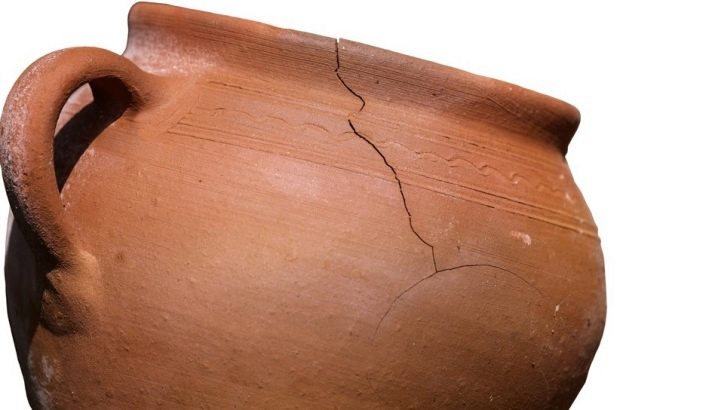
Terms of use
Clay dishes are very easily saturated with various smells. That's why it is advisable to use it for storing and preparing only certain specific products.
If you have to lay or cook something else, the pots must be roasted in the oven. Only this technique guarantees the elimination of unnecessary odors.

The dishes should be calcined carefully, without placing it directly in a hot oven. What's more, keeping the temperature at a moderate level throughout the entire process, you can achieve much better results.
As for the cooking process itself, many chefs advise filling the earthenware with water for about 15 minutes before starting work. Then the water that has penetrated into the pores will evaporate and you will get an imitation of steam cooking.

Separately, it should be mentioned how to prepare for using pottery for the first time after purchase.
To do this, her:
- washed properly;
- fill with water (optional - with the addition of soda);
- put in a warm oven and bring to a boil;
- turn off heating and allow to cool.

Further clay pots intended for baking must be coated with vegetable oil from the inside. Such measures allow avoiding the appearance of microcracks. Rinse the containers later before each use.
It is important to remember that wet clay heats up worse than metal.
Therefore, if the recipe calls for cooking at a high temperature, you can further increase the heat and cook the dish for longer.

It is impossible to give precise recommendations on this score: all chefs select the necessary parameters by trial and error. As for clay teapots, you should not leave tea leaves in them for several days in a row. Optimum results are obtained if the kettle is washed and dried after each use.
It should be borne in mind that there are some exceptions to the general rule “do not put pottery on fire”. These exceptions are the Georgian ketsi frying pan and the old Russian latka.


Care features
Clay is reasonably considered a "delicate" material. But with proper care, it is quite possible to count on the long-term operation of such dishes. Earthenware must not be washed in dishwashers; manual cleaning is much better suited to it. Grease can be removed by wiping dirty areas with a sponge soaked in soapy water. The use of synthetic detergents should be avoided whenever possible.

It is also undesirable to leave the dishes wet: responsible owners wipe them dry. If suddenly the lid of the earthen vessel is broken, there is no need to panic. You can make a good substitute with your own hands - by baking a lid of the same shape from ordinary dough. Hot pots should not be placed in the refrigerator or on a cold surface. It is better to wait for their contents to cool down to room temperature first.

It is recommended to store pottery open.
If you keep it closed, you may encounter unpleasant odors. For cleaning, it is advised to use soft sponges (hard ones can damage sensitive material).Compliance with the basic recommendations allows you to guarantee a long service life of ceramic dishes and good culinary results. You can glue broken pots and jugs using special food glue (you just need to check the safety of the composition).

In some cases, universal adhesives such as "Moment" or "Second" are a good alternative. The problem is solved like this:
- collect all the fragments;
- wash them under running warm water using a gentle dishwashing detergent;
- dried;
- degrease the edges of the chips with acetone or alcohol;
- carefully apply glue;
- tightly connect the joints;
- remove excess glue mass with a soft cloth.

Varieties
Do not assume that only pots, jugs and teapots are made of clay. This material is used much more widely. For baking in the oven, pots are still the most attractive choice. Their shape (wide throat, narrow bottom and widening in the center) is justified by centuries of practice. It is such dishes that perfectly distribute heat throughout the entire volume.
Clay pots are considered the best choice for roasts, stews and similar dishes.

Pottery for tea deserves a separate discussion. In such a "tea" country as China, all the attributes of tea drinking are made exclusively from ceramics. These include:
- bowls;
- cups;
- tea kettles;
- containers for storing herbs.
Only glazed dishes are suitable for tea drinking.
When brewing tea in an unglazed vessel, you will have to put up with the fact that the aroma of the first brew will forever saturate the material. The same rule will have to be observed in relation to the ceramic turk. Each type of coffee is brewed in a strictly defined container. Otherwise, a very unpleasant mixture of aromas can turn out.

Glazed crockery is the only option made of clay for cooking in the microwave.
It is impossible to use unglazed products for this purpose. You can also not take dishes with silver and gold paints for microwave ovens.
There are various options for "microwave" ceramics:
- warming containers;
- pots of different sizes;
- Bakeware;
- baking dishes.

Among the kitchen utensils made of clay, it is also worth mentioning:
- baking dishes;
- utensils for cooking soups;
- dishes for cooking roast;
- julienne;
- tagines;
- braziers;
- cauldrons;
- kebab makers.
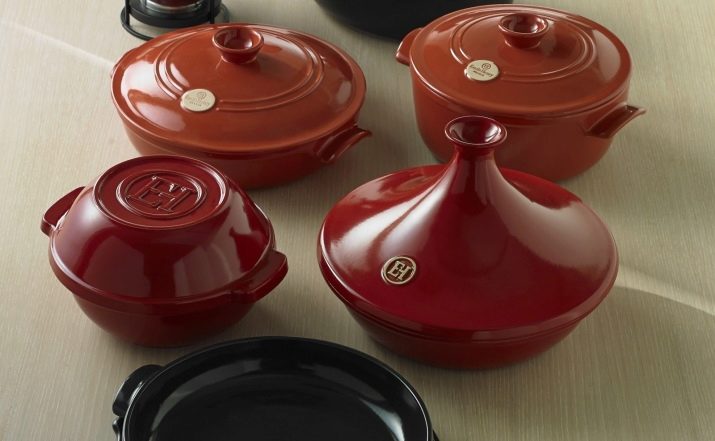
All these products are suitable not only for processing food, but also for serving ready meals on the table. And for lovers of Georgian cuisine, the ketsi clay pan is ideal. Various dishes are baked in the oven. Ketsi sometimes serves as a bowl, a bowl for hot and cold dishes. In the manufacture of this type of tableware, glaze is not always used, so you will have to choose more carefully.

In addition to these things (as well as plates, saucers and sets), it is necessary to mention many more clay items that can be found in the kitchen:
- tureen;
- cocotte;
- salad bowl;
- cashier;
- vases for storing vegetables;
- sugar bowls;
- vessels for wine and a number of other types of tableware.

Manufacturers overview
A good choice is the products of the Voronezh company "Khoromy Keramika". This firm started its work in 2017. Its range includes:
- cups;
- saucers;
- vases;
- teapots;
- mugs and many other things.

The products of "Tarusa Keramika" can be considered an alternative. This factory has been making pottery since 1974. And since 1971 the plant "Pskov Potter" has been operating, the employees of which apply all the techniques of modern design and hand painting. You can buy a wide variety of utensils there, including tea sets. The products of "Pskov Potter" have repeatedly won prizes at Russian and foreign exhibitions.


It is also worth considering the ceramics of firms:
- Leander;
- Bernadotte;
- Royal Czech Porcelain;
- Colombo;
- Continental;
- Costa Nova;
- Domenik.
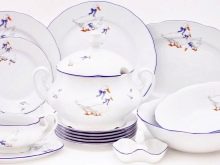


How to choose?
When choosing pottery, you should not be guided by trade marks alone. The beauty of specific products is also of great importance.After all, kitchen utensils must necessarily create a pleasant impression. The next point to pay attention to is the volume of products. They can be designed for one or more servings.
But even the most capacious and elegant dishes should be resistant to mechanical and thermal influences. And these parameters depend on the firing. The quality of processing can be judged by the purity and sonority of the sound, by the accuracy of the forms.
Good products must have walls and bottoms of the same thickness. When it is not uniform, heating can lead to cracking.
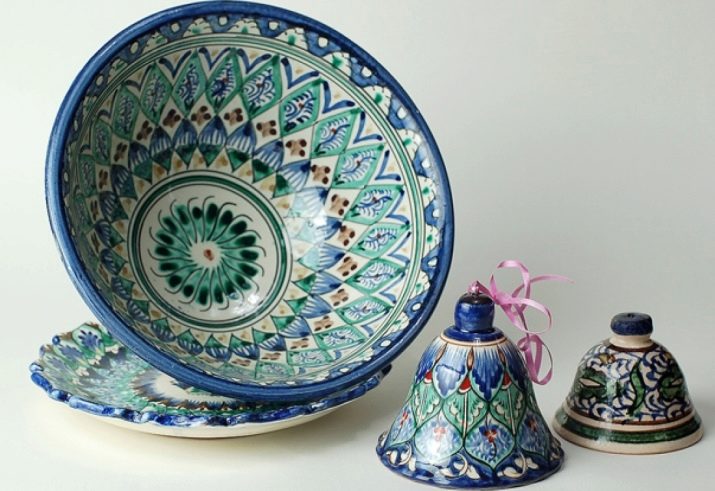
Strongly unacceptable:
- scratches;
- cracked areas;
- bloating;
- chips.
Good earthenware is glazed evenly, without streaks or distortions.
If you need a pot for boiling soup, you need to choose a product with a narrowed throat. This will reduce the evaporation of the liquid.
As in any other case, you should not save too much on the purchase... Finally, in order to choose the right pottery, you need to pay attention to reviews, which describe all the disadvantages of the pot.

You can learn more about the different types of pottery and their purpose in the following video.









Why have you forgotten Borisov ceramics? Excellent quality!